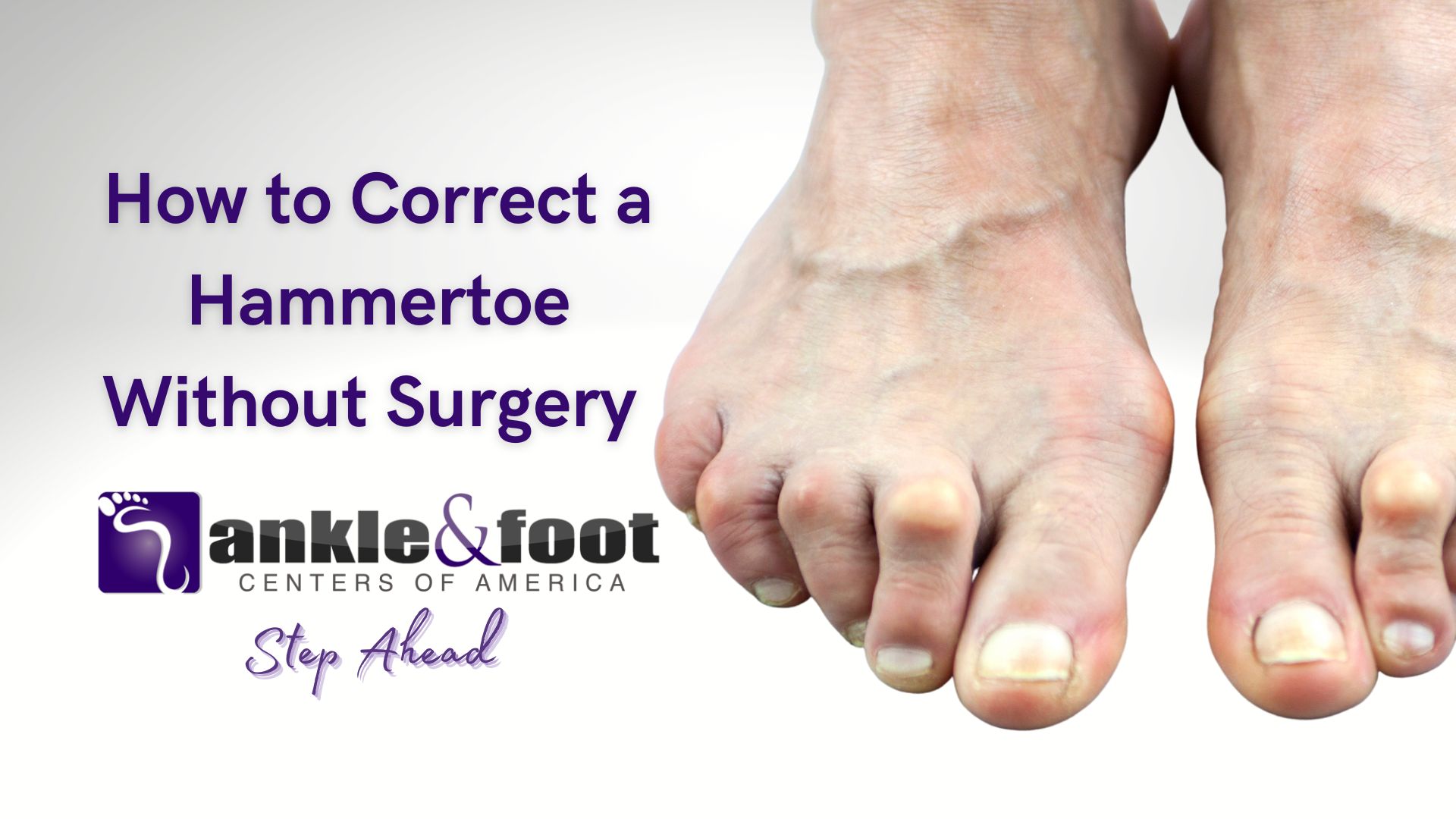Hammertoe is a condition that affects the toes, causing them to become deformed and bent. This can lead to pain and discomfort when walking, making it difficult to perform everyday activities.
Fortunately, there are non-surgical treatment options available to alleviate the symptoms of hammertoe. In this blog post, we will discuss these treatment options in detail and why it is important to seek medical advice before attempting any treatment.
Non-Surgical Treatment Options for Hammertoe
 Footwear Modification – One of the most effective ways to treat hammertoe without surgery is to modify your footwear. Wearing shoes that are too tight or have a narrow toe box can exacerbate the symptoms of hammertoe. Instead, it is important to find shoes that fit properly and have a wide and deep toe box. This will give your toes room to move and reduce the pressure on them.
Footwear Modification – One of the most effective ways to treat hammertoe without surgery is to modify your footwear. Wearing shoes that are too tight or have a narrow toe box can exacerbate the symptoms of hammertoe. Instead, it is important to find shoes that fit properly and have a wide and deep toe box. This will give your toes room to move and reduce the pressure on them.
There are several types of shoes that are recommended for people with hammertoe. These include shoes with a low heel, such as athletic shoes or sandals, as well as shoes made from soft materials that will not irritate the toes. It is also important to avoid high heels or shoes with pointed toes, as these can put excessive pressure on the toes and worsen the symptoms of hammertoe.
Orthotic Devices – Another non-surgical treatment option for hammertoe is the use of orthotic devices. These are specially designed inserts that are placed inside the shoes to provide support and cushioning to the feet. There are several different types of orthotics available, including:
- Toe Crests: These are small inserts that fit underneath the toes and help to lift them up, reducing the pressure on the affected joints.
- Toe Sleeves: These are soft, cushioned sleeves that fit over the affected toes, providing a protective barrier and reducing friction.
- Toe Spacers: These are small inserts that fit between the toes, helping to keep them separated and reducing the pressure on the affected joints.
Orthotics can be purchased over-the-counter or custom-made to fit your feet. They are a great option for people with mild to moderate hammertoe who want to avoid surgery.
Exercises and Stretches – Exercises and stretches can also be helpful in treating hammertoe without surgery. These exercises can help to improve the flexibility and strength of the toes, reducing the risk of further deformity. Some examples of exercises and stretches include:
- Toe Stretch: Sit in a chair and place your foot on the ground. Using your hand, gently pull your toes back towards your shin, holding for 10-15 seconds before releasing.
- Toe Curls: Sit in a chair and place a small towel on the ground. Using your toes, curl the towel towards you, holding for 10-15 seconds before releasing.
- Toe Raises: Stand up and raise yourself up onto your toes, holding for a few seconds before lowering back down.
These exercises and stretches can be done several times a day, and can be particularly helpful when done in combination with other non-surgical treatment options.
Medications – Finally, there are several medications that can be used to treat hammertoe without surgery. These medications can help to reduce pain and inflammation, making it easier to manage the symptoms of hammertoe. Some examples of medications include:
- Anti-inflammatory drugs: These drugs, such as ibuprofen or naproxen, can help to reduce pain and inflammation in the affected area.
- Corticosteroid injections: These injections can be given directly into the affected joint, helping to reduce inflammation and pain.
- Topical creams: There are several creams and gels available that can be applied directly to the affected area, providing pain relief and reducing inflammation.
It is important to note that while these medications can be helpful in managing the symptoms of hammertoe, they do not address the underlying cause of the condition. Therefore, they should be used in combination with other non-surgical treatment options to achieve the best results.
When to Seek Medical Attention
 While non-surgical treatment options can be effective in managing the symptoms of hammertoe, it is important to seek medical attention if the symptoms worsen or do not improve with treatment. Your doctor may recommend additional treatment options, such as physical therapy or surgery, depending on the severity of your condition.
While non-surgical treatment options can be effective in managing the symptoms of hammertoe, it is important to seek medical attention if the symptoms worsen or do not improve with treatment. Your doctor may recommend additional treatment options, such as physical therapy or surgery, depending on the severity of your condition.
During a medical appointment, your foot doctor will likely perform a physical exam and take a medical history to determine the best course of treatment. They may also order X-rays or other imaging tests to evaluate the extent of the deformity and determine the best treatment plan.
Conclusion
In conclusion, hammertoe is a common condition that can cause pain and discomfort in the toes. Fortunately, there are non-surgical treatment options available that can help alleviate the symptoms of hammertoe. These treatment options include footwear modification, orthotic devices, exercises and stretches, and medications. It is important to seek medical advice before attempting any treatment and to continue to seek medical attention if the symptoms worsen or do not improve with treatment. With the right treatment plan, it is possible to manage the symptoms of hammertoe and improve your quality of life.




